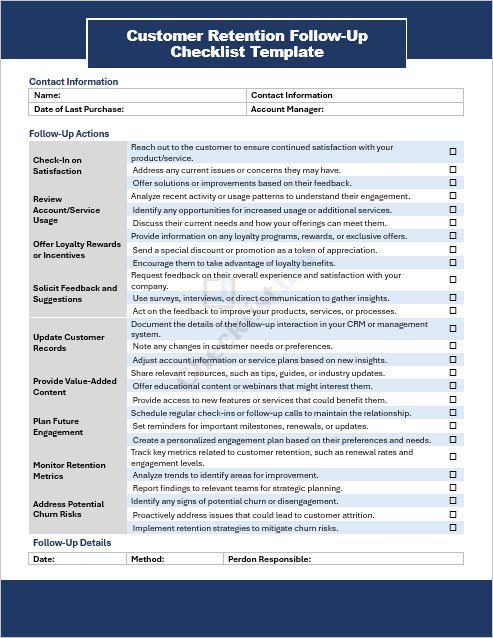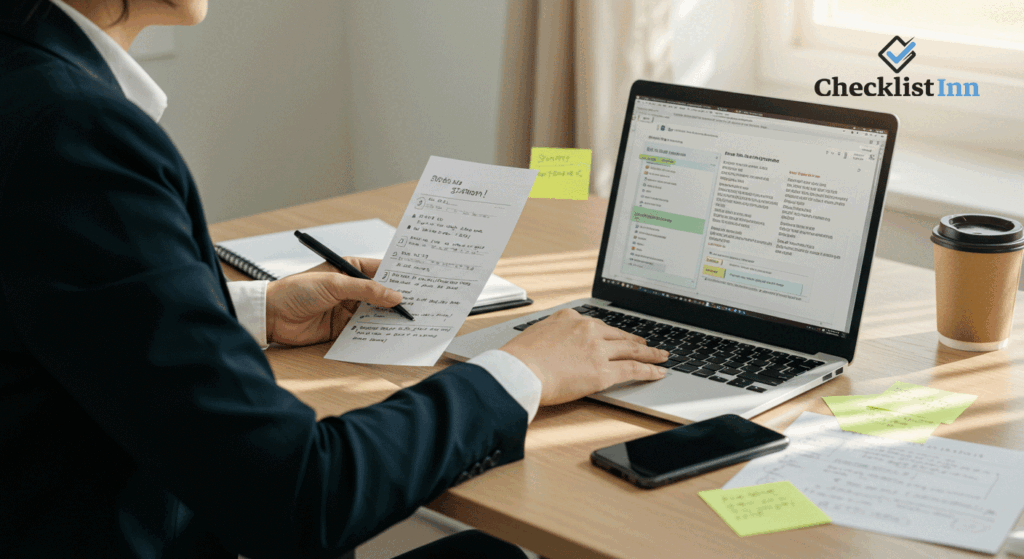Simplify your customer follow-ups with free, customizable checklists designed to keep you organized and effective.
Staying in touch with customers after a sale or interaction is one of the simplest ways to build trust and keep your business top of mind. But when things get busy, it’s easy to forget who you’ve followed up with and who still needs attention. That’s where a customer follow-up checklist makes all the difference. On this page, you’ll find a set of free, easy-to-use MS Word templates that you can customize to match your own process. Whether you’re welcoming a new client, checking in after an event, or making sure no sales lead slips through the cracks, these checklists give you a clear, step-by-step way to stay consistent and professional—without the guesswork.
Following up with customers doesn’t have to be complicated. Our free, customizable templates make it easy to stay organized and consistent. Each checklist is ready to use in MS Word and can be quickly adjusted to fit your business. Just download, edit, and start using them to keep your follow-ups simple and effective.
Following up with customers isn’t just about checking a box—it’s about building stronger relationships and ensuring your customers feel valued. When you take the time to follow up, you’re showing that you genuinely care about their experience and want to make sure they’re happy with your product or service.
Here’s why following up is so important:








Strong follow-ups can turn one-time buyers into loyal customers. Here are a few simple tips to make yours more effective:
Done right, follow-ups show customers you care and keep relationships strong.
Follow-ups work best when done thoughtfully. Here are a few mistakes to watch out for—and how to avoid them:

Avoiding these pitfalls helps you make every follow-up meaningful—and strengthens customer relationships instead of harming them.

A customer follow-up checklist is a step-by-step guide that helps businesses stay organized when reaching out to clients after a purchase, event, or interaction.
Using a checklist ensures you don’t miss important steps, keeps your communication consistent, and helps build stronger customer relationships.
Yes! All templates are provided in MS Word format, so you can easily edit and adjust them to fit your specific business needs.
You’ll find checklists for sales follow-ups, customer support, new client onboarding, retention, and more.
Absolutely. All templates are free to download and use—no hidden costs.